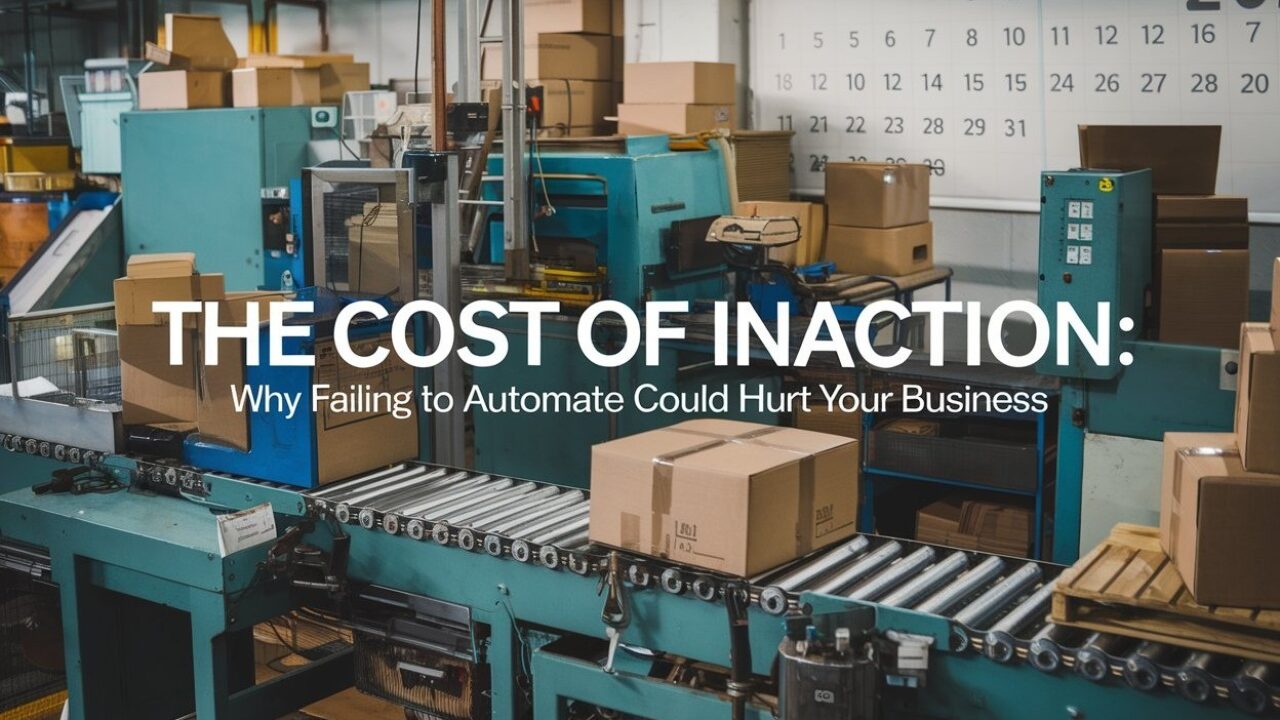
Introduction
In today’s competitive landscape, the failure to adopt automation can severely hinder a business’s ability to thrive. While the upfront costs and complexity of implementing automation may seem daunting, the long-term consequences of inaction can be far more detrimental. This article explores the hidden costs of not automating, with examples from various industries to illustrate the potential losses businesses may face.
The Hidden Costs of Inaction
1. Increased Operational Costs
Labor remains one of the most significant expenses for many businesses, especially in sectors like manufacturing, retail, and logistics. Manual processes are labor-intensive, slow, and prone to errors. By not automating repetitive tasks, businesses face higher operational costs and lower profit margins. For example, companies that continue to rely on manual warehouse operations incur higher labor costs and increased error rates, which could be mitigated by automation(Brightpick).
2. Human Error and Inefficiencies
Manual processes are inherently prone to human error, which can lead to costly mistakes. In IT departments, for example, the lack of automation often results in frequent errors during system updates and maintenance. These errors not only disrupt operations but also create additional work to correct the mistakes, leading to increased downtime and reduced productivity. Automation reduces the risk of human error, ensuring smoother operations and better accuracy(The Enterprisers Project).
3. Missed Revenue Opportunities
Failing to automate can result in missed revenue opportunities, particularly in fast-moving industries where speed and efficiency are crucial. For instance, slow or inaccurate order fulfillment due to manual processes can lead to poor customer experiences, resulting in lost sales and diminished customer loyalty. In the retail sector, 62% of retailers cite manual processes as the biggest cause of inventory and fulfillment issues, which could be drastically improved through automation(Brightpick TopSell Platform).
4. Employee Dissatisfaction and Turnover
Employees today expect modern, efficient tools to help them perform their jobs effectively. When businesses rely on outdated, manual processes, employees can become frustrated, leading to burnout and high turnover rates. This is particularly true in industries where automation could alleviate physical labor and streamline workflows, making jobs more fulfilling and less stressful. High employee turnover is costly, often requiring businesses to spend significant resources on hiring and training new staff(Baker Tilly).
5. Competitive Disadvantage
Perhaps the most significant risk of not automating is the competitive disadvantage it creates. As more companies adopt automation, those that fail to do so will struggle to keep up. This can lead to a shrinking market share, lower profitability, and ultimately, the risk of business failure. For example, companies that invest in automation can scale their operations more efficiently, respond faster to market changes, and deliver better customer experiences, leaving their less automated competitors behind(Mailing Systems Technology).
Key Takeaways:
- Failing to automate can result in higher operational costs and inefficiencies.
- Businesses face increased risks of human error and missed revenue opportunities without automation.
- Automation enhances scalability, employee satisfaction, and overall business agility.
- Delaying automation can cause businesses to fall behind competitors and struggle with modern market demands.
Conclusion
The cost of failing to automate is substantial. From increased operational costs to missed opportunities and a decline in employee satisfaction, businesses that fail to automate risk falling behind in an increasingly automated world. Embracing automation is no longer just an option; it’s a necessity for survival and growth in the modern marketplace.
